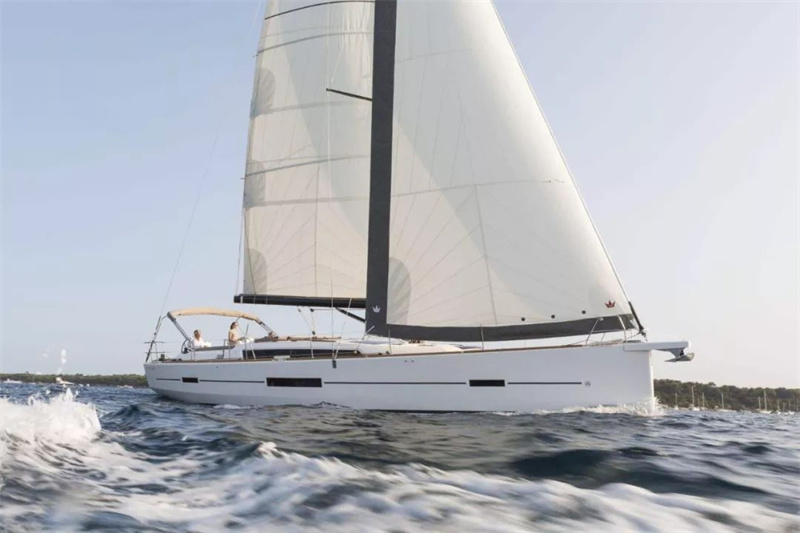Shipbuilding


01
7 Jan 2019
The development of modern high technology is inseparable from composite materials, which plays a very important role in the development of modern science and technology. In recent years, it has been widely used in aerospace, marine development, ships, high-speed rail vehicles, etc. Because of its light weight, corrosion resistance, high temperature resistance, and high strength, it has played a great role in many fields, replacing Many traditional materials.
At present, glass fiber and carbon fiber composite materials play a huge role in the field of shipbuilding.
1. 0 Application in ships
Composite materials were first used on ships in the mid-1960s, initially for deckhouses on patrol gunboats. In the 1970s, the superstructure of minehunters also began to use composite materials. In the 1990s, composite materials had been fully applied to the fully enclosed mast and sensor system (AEM/S) of ships. Compared with traditional shipbuilding materials, composite materials have good mechanical properties and are used to manufacture hulls. They are light in weight and more energy-saving, and the manufacturing process is relatively simple. The application of composite materials in ships not only achieves weight reduction, but also increases radar infrared Stealth and other functions.
The navies of the United States, Britain, Russia, Sweden, and France attach great importance to the application of composite materials in ships, and have formulated corresponding advanced technology development plans for composite materials.
1. 1 Glass fiber
High-strength glass fiber has the characteristics of high tensile strength, high elastic modulus, good impact resistance, good chemical stability, good fatigue resistance, high temperature resistance, etc. It can be used for deep-water mine shells, bulletproof armor, lifeboats, high-pressure vessels and propellers, etc. . The U.S. Navy used composite materials in the superstructure of ships very early, and the number of ships equipped with composite superstructures is also the largest.
The composite material superstructure of the U.S. Navy ship was originally used for minesweepers. It is an all-glass reinforced plastic structure. It is the largest all-glass composite minesweeper in the world. It has high toughness, no brittle fracture characteristics, and has excellent performance when it withstands the impact of underwater explosions. .
1.2 Carbon fiber
The application of carbon fiber-reinforced composite masts on ships is gradually emerging. The entire ship of the Swedish Navy's corvettes is made of composite materials, achieving high-performance stealth capabilities and reducing the weight by 30%. The magnetic field of the entire "Visby" ship is extremely low, which can avoid most radars and advanced sonar systems (including thermal imaging), achieving the effect of stealth. It has the special functions of weight reduction, radar and infrared double stealth.
Carbon fiber composites can also be used in other aspects of the ship. For example, it can be used as propeller and propulsion shafting in the propulsion system to reduce the vibration effect and noise of the hull, and it is mostly used in reconnaissance ships and fast cruise ships. It can be used as a rudder in machinery and equipment, some special mechanical devices and piping systems, etc. In addition, high-strength carbon fiber ropes are also widely used in the cables of naval warships and other military items.
Carbon fiber composite materials are used in other applications of ships, such as propellers and propulsion shafting on propulsion systems, to reduce the vibration effect and noise of the hull, and are mostly used for reconnaissance ships and fast cruise ships. Special mechanical devices and piping systems, etc.


02

7 Jan 2019

2. 0 Civil Yachts
The super yacht brig, the hull and deck are covered with carbon fiber/epoxy resin, the hull is 60m long, but the total weight is only 210t. The Polish-built carbon fiber catamaran uses vinyl ester resin sandwich composites, PVC foam and carbon fiber composites. The mast and boom are all custom carbon fiber composites, and only part of the hull is made of fiberglass. The weight is only 45t. It has the characteristics of fast speed and low fuel consumption.
In addition, carbon fiber materials can be applied to instrument panels and antennas of yachts, rudders, and reinforced structures such as decks, cabins, and bulkheads.
Generally speaking, the application of carbon fiber in the marine field started relatively late. In the future, with the development of composite material technology, the development of maritime military and the development of marine resources, as well as the strengthening of equipment design capabilities, the demand for carbon fiber and its composite materials will increase. flourishing.
